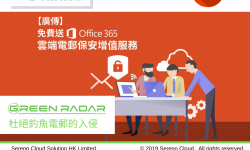Unfortunately, as technology advances, the latest and greatest tools help not only the organization, but also the criminals who use them to target businesses. With businesses pursuing digital-first strategies, it's a question of when, not if, they'll be hit by a cybersecurity threat. Because of this anticipated risk, having the correct technology in place is no longer enough; your company needs a cybersecurity strategy to prevent, detect, and recover from a ransomware attack.
The truth is that you can have a complete armory of the most advanced protection solutions and yet be a victim of ransomware. The correct defensive tools are important, but they're only part of the picture. To defeat ransomware, you'll need a well-thought-out, multi-layer strategy based on a proven structure, which we detail in this post.
Creating A Cybersecurity Strategy in 4 Easy Steps
There are four steps to properly developing and implementing a cybersecurity strategy to prevent, detect, and defeat ransomware.
🟩 Create a solid foundation. The first stage in developing a cybersecurity strategy is to establish a clear and consistent basis. The fundamental functions, which include how you identify, protect, detect, respond, and recover from threats, are at the heart of this structure. You will define the activities and expected objectives for each function in this step, which will subsequently be conveyed to all levels of your organization.
🟩 Figure out the tier you're in. After you've established a framework, you'll need to figure out which tier your existing cybersecurity approach for ransomware assaults belongs in. The tiers are as follows:
🔸Reactionary is the first tier. There isn't much in the way of a defined cybersecurity strategy. Risks are addressed when they arise.
🔸Awareness is the second tier. Although there is an understanding of the importance of having an organizational cybersecurity plan, communication is informal and policies are lacking.
🔸Defined Policies, Tier Three. This tier is defined by repeatable processes and enterprise-wide rules that are evaluated and changed on a regular basis to keep up with evolving threat and technology landscapes.
🔸Proactive is the fourth level. You can adjust quickly to new and emerging dangers at this level. Regarding cybersecurity risk and company goals, there is also a unified interaction with all business leaders.
Knowing where you're starting from will help you figure out how much progress you need to make.
🟩 Create a multi-tiered strategy. Attackers have a variety of ways to get access to your network, especially when teams work remotely. It's critical to evaluate each of those channels and establish several degrees of protection, from user education to the optimal firewall location within the company, to create a layered approach.
Using strategically placed firewalls inside your company to segregate, analyze, and scrub traffic traversing VLANs or moving across sites is one technique to aid with a layered approach.
Making sure they all function together cohesively is an important part of building your cybersecurity strategy. They create a safety net by acting together to prevent an incidence from occurring several times, lowering total risk.
🟩 Make the most of your resources. When developing a cybersecurity strategy, don't forget to take advantage of the resources you already have. Within the internal logs of your gadgets, you have a gold mine of information. Enabling all of the features and functionality you already have will help you get the most out of any new technologies you implement.
Allow Sereno to assist you in your battle against ransomware.
Using a cybersecurity strategy to transition from a tier-one organization to a tier-three or four enterprise doesn't happen overnight, and it doesn't happen without help. Sereno will guide you through the process and design a personalized blueprint to assist you defeat ransomware. To get started, contact Sereno right away.






